David, I'm not so sure that I have a thorough grasp, conceptually and physically (form and function), on the difference between a "Raynor" bunker and a "CBM" bunker.
And, I don't think anyone has clearly defined the alleged distinction
Until that happens, I don't know how can state that a transformation took place, and if it did, in what form.
A very good point. This is the issue about which I am most curious. Did you take a look at the photos I posted in the second post of this thread? All but two of the photos are of NGLA. Do these look to you like the current features? Do they look anything like what we usually expect Raynor to have done? They do not to me, and this leads me to believe that Macdonald preferred more natural or wild looking features than Raynor. Photos of mid-ocean (another course with which Macdonald was more directly involved) support this belief.
It realize that it is difficult to sort out since (from NGLA on) Raynor was the one constructing CBM's designs, and of course was in charge of his own courses as well. So, I am drawing a distinction between the bunkers Raynor built for Macdonald and those that he built without Macdonald's direct involvement. Admittedly a narrow distinction, but I keep coming back to a point about which we agree--
If CBM was directly involved then the course would reflect his aesthetic preferences, or else he'd have it changed.
Dave, with rudimentary equipment, circa 1906-09, I don't think that an unnatural look was possible.
But, as maintainance practices evolved, so did the look they produced.
Not sure I can agree with this. From the photos I have seen, the bunkering was extremely unnatural looking. A few examples . . .
A few bunkers built at Huntington Valley in 1909. As I understand it, that mesa in the first photo was a bunker with a sand top and grass sides.
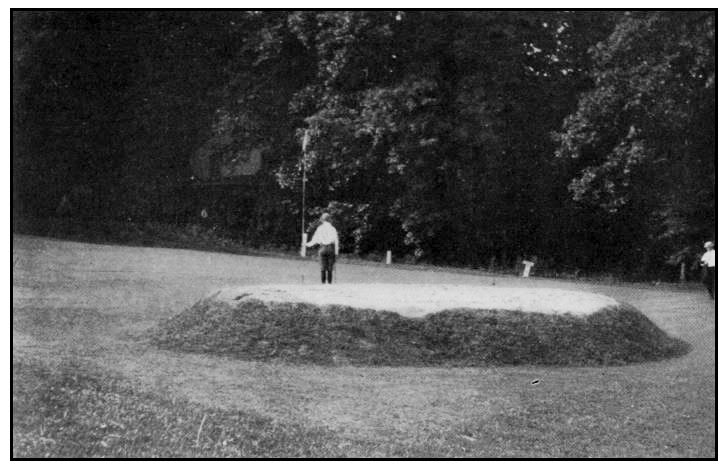
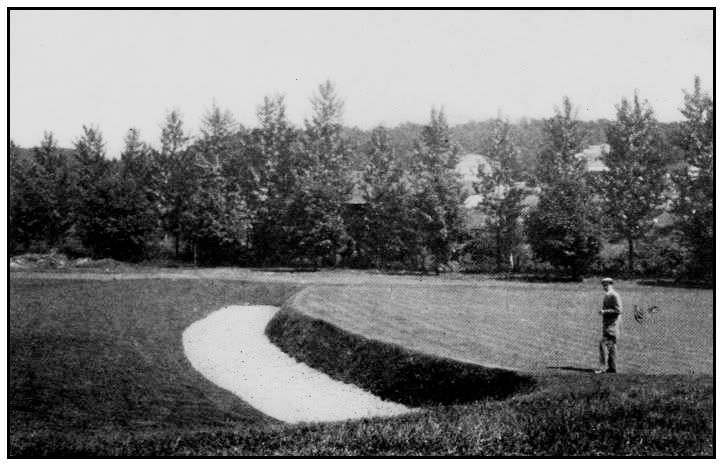
These features were typical of the kind of bunkers featured at America's top courses, and this was 1909. So I don't accept that NGLA's bunkers looked that way because they were new or because of the equipment available at the time. Compared to these types of features, how can we
not view NGLA's early bunkers as a huge step toward a more natural look.
The claim that MacDonald's path wasn't natural is mostly misunderstood.
I wonder, based on people who have played and studied NGLA, what's unnatural about it, from the perspective of the golfer playing the golf course ?
The unnatural or constructed component at NGLA tends to be visible from behind the greens, as is the case at many courses, but, that's not the view, or the field of play that the golfer encounters during his round.
A good question. Tough for me to answer because the contouring and flow seem very natural to me, almost as if they just shaved down the grass. I agree that one can see the signs of some pushing of dirt from behind the greens, but I think that even this has been greatly exaggerated.
But some people don't appreciate what might be termed the "industrial" look of many the bunkers; the sharp lines, the more uniform shapes. This engineered or industrial look seems typical to some of Raynor's work. More specifically, some think the steeply sloped, closely mown grass bunker faces unnaturally contrast with the flatter sandy bottoms of the bunkers, and that this transition is too straight edged and uniform, rather than jagged and random.
See the photo I posted of the bunker around the 18th, and these few . . .
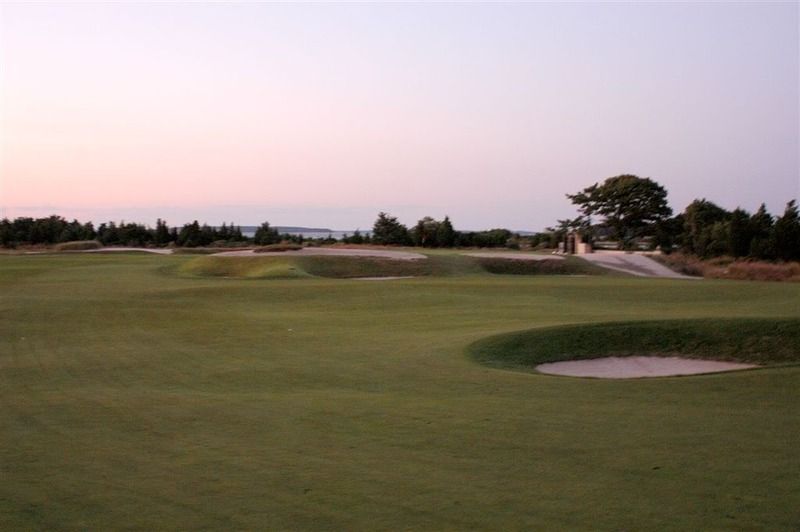
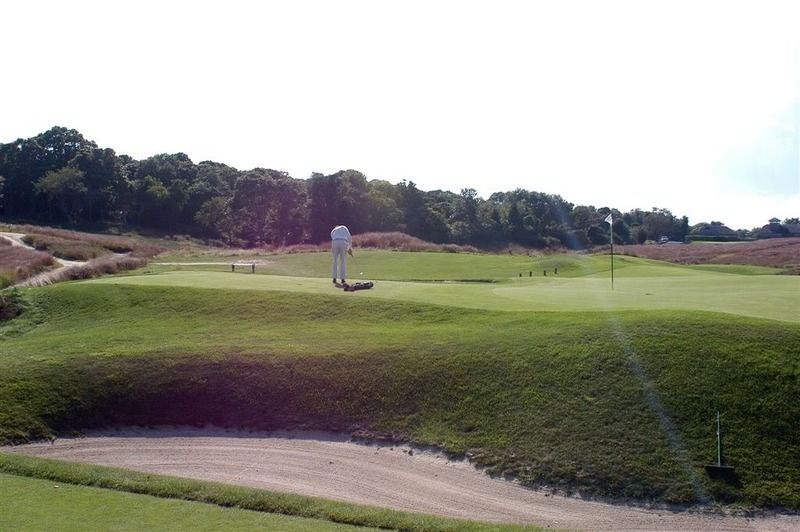
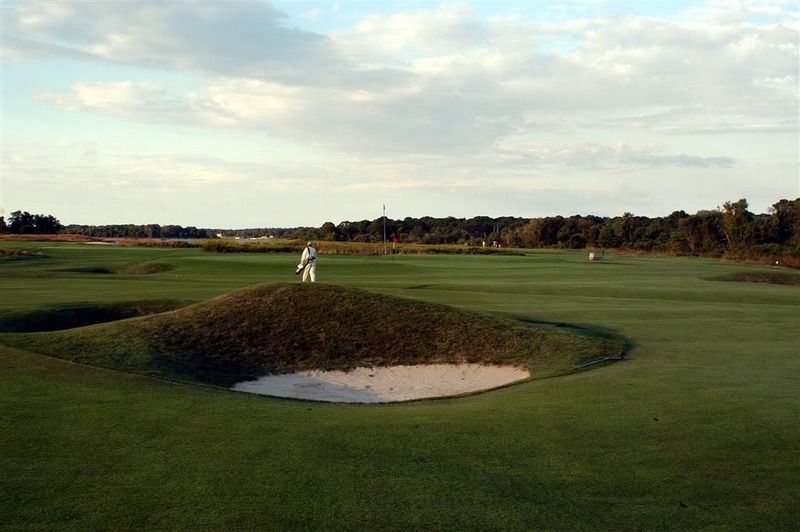
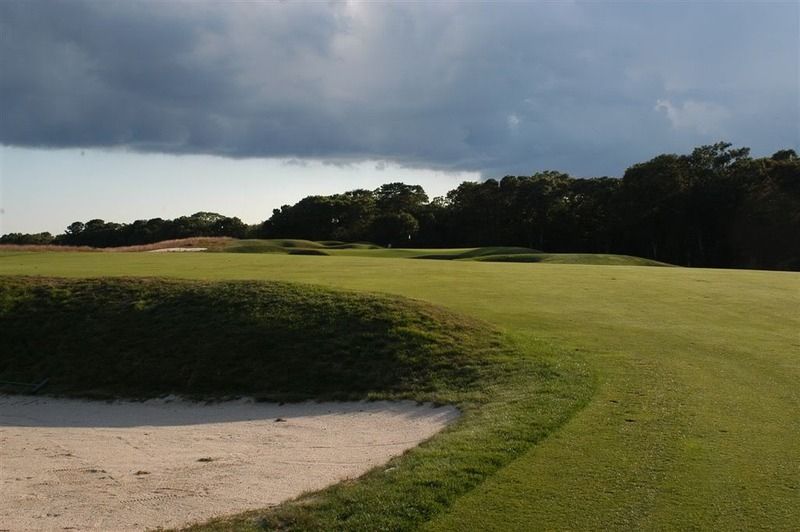
Also, as one can see in the photos above, CBM usually built bunkering into mounds or hillsides, and unfortunately I think
this reminds some people of the cop style bunkers with their long trench and uniform "cop" mounding in front, like these below. The first, Portland, is from 1899. Note how the cross section of the cop reveals that it was quite uniform and shaped like a triangle. The second, from Shinnecock (circa 1890) is a rougher but still one can tell that there was no concern given to making the haystack like cop look at all like a natural ground formation.
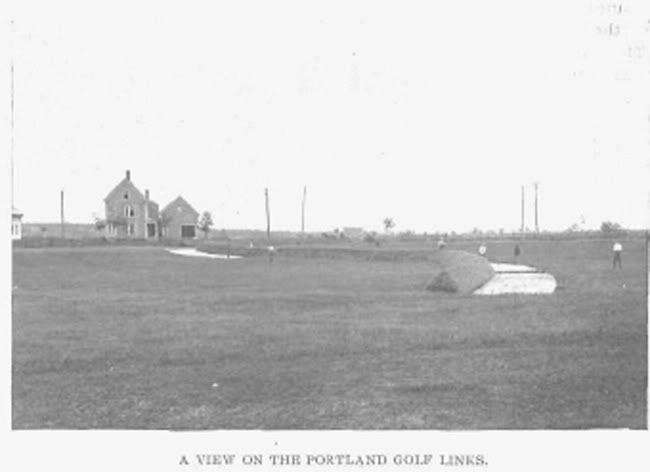
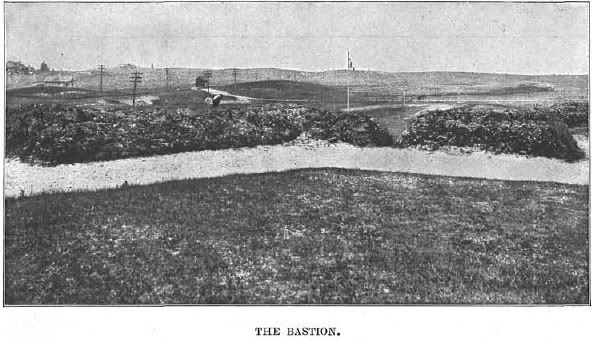
Despite that some hold dear this impression, CBM was NOT building into the side of mounds and hills to emulate the cop, but rather
to emulate nature. To his eye, a bunker built into flat ground looked unnatural. From SG, pge. 244 . . .
Sand mounds can be created to conform truly with nature, but pot bunkers rarely do if on flat ground; never if they are not on the side of a mound or hill can they be made to look natural, and when building a course this should be born in mind.[/quote]
All that being said, the bunker style now does seem to differ with that in most of the early photos, and that is why I find it odd when people assume that the aesthetic style of the current bunkers was Macdonald's doing.
_______________________________________________________________
Patrick, I agree that the bunkers in the 1938 aerials are incredible!